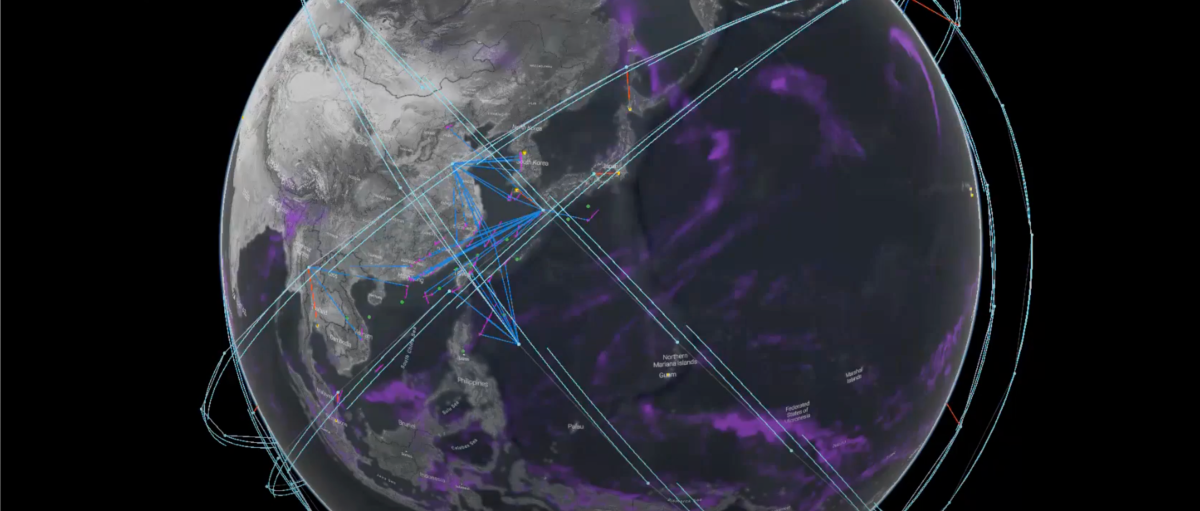Aalyria, a startup born out of Google parent company Alphabet, announced on February 12 that it had successfully demonstrated its software platform for managing a network of communications satellites. The Dec. 7 demonstration at the Naval Research Laboratory in Washington, D.C., was funded by the Defense Innovation Agency as part of a larger effort to create a multi-vendor, multi-orbit satellite architecture.
Aalyria, headquartered in Livermore, California, is working on an $8.7 million contract with DIU to implement Spacetime software to support hybrid space architecture. The Defense Innovation Unit, or DIU, is a Pentagon agency that works with the private sector to identify commercial technologies that could meet military needs. It launched a hybrid network project in 2022 to help meet the military’s global communications demand regardless of limitations or failures of land infrastructure.
“This demonstration validated Aalyria’s ability to create a hybrid network in space by combining satellites from different orbits and providers,” said Chris Taylor, founder and chief executive officer of Aalyria.
The military needs a dynamic, multi-party network that is insensitive to single points of failure and provides redundancy against threats, Taylor said. Space News . He noted that the combination of satellites in low, medium and much higher geostationary orbits provides greater coverage and lower latency, which is critical for operational intelligence and defense operations.
More than 150 officials from the U.S. government and defense departments, as well as the European Space Agency, attended the demonstration at NRL, Taylor said. The mesh network included approximately 630 satellites from three commercial satellite operators (OneWeb, Viasat and Intelsat). They used terminals from OneWeb, Kymeta, Viasat and Comtech. Fixed and mobile ground terminals were located in four locations on two continents. “The integrity of the network was verified in real time by the NRL during the show,” Taylor said.
Automation of network operations
Although its technology comes from Google, Aalyria is an independent company with two main products. One of these is the Spacetime software platform for network orchestration and routing. The other is a laser communications terminal used to transmit data from space to earth through the atmosphere.
Spacetime automates the planning and commissioning of satellites, ground stations and user terminals. But it doesn’t magically solve interoperability problems, such as one company’s ground modems not being able to communicate with other companies’ satellites, or satellites’ optical communications links not being compatible with other satellites’ communications.
“The software is aware of this and is not trying to ask you to link something that is not compatible with others,” Taylor explained.
During the hybrid space demonstration, DIU Spacetime simulated the Starlink network, but SpaceX’s satellites could not actually connect to the network because the company did not disclose where its payload antennas were pointed. Taylor said military satellites such as Wideband Global Satcom or Mobile User Objective System were not included in the hybrid network demonstration because the company was given only 60 days to put them together, which was not enough to provide access to MUOS and WGS.
Steve “Bucky” Butow, DIU’s space portfolio manager, was an early proponent of the hybrid space architecture project. Speaking Feb. 7 at the SmallSat Symposium in Mountain View, Calif., he said DIU sees the project as a significant public investment in space infrastructure that can help facilitate and advance commercial activities, just as the terrestrial Internet did 30 years ago.
In addition to Aalyria, other companies awarded contracts for the DIU program include Amazon Web Services, Kuiper Government Solutions, Microsoft Azure Space, SpiderOak Mission Systems, Anduril, Atlas Space Operations and Enveil.
“We are working with the U.S. Space Force, the Air Force Research Laboratory and others to create a hybrid space architecture,” Butow said. “The smart move for the government is to make these investments and create the infrastructure that will allow companies to develop software services and integrate them into the architecture.”
“We need a hybrid architecture for national security, resilience, and truly low-latency multipath communications, and maybe eventually we can cut out the base layer altogether,” he said.
Butov explained that DIU is trying to “revive the architecture and prepare all the necessary components to be able to offer a new service.”
How Did Spacetime Begin?
Aalyria’s CTO, Brian Barritt, previously worked at Google, where he helped develop Spacetime as part of Project Loon, an effort to deliver worldwide Internet services using high-altitude balloons. Parent company Alphabet closed the project in 2021, creating an opportunity to develop the technology Aalyria acquired.
Spacetime was created by a large group of Google engineers, Barritt recalled. OneWeb founder Greg Weiler, who was involved in the development of Spacetime, was working there at the time.
“This is designed to deal with the many complexities of operating highly directional beam web networks,” Barritt said. “We decided to see if we could build one that would support space, air and ground assets.”
He added that network automation software like Spacetime would benefit from the adoption of common standards across the industry. Barritt added that the US government has recognized the value of open standards-based modular architectures for network and task management.
He explained that space-time can communicate with many networks in different areas and frequency bands thanks to its modular open system approach. “It figures out if the fiber in the ground is slower than the space-to-ground link, sees that, and plans the network around it.”
He added that with the ongoing consolidation of the telecommunications industry, tools like Spacetime are becoming increasingly popular. “We’re seeing constellations coming together at different frequencies and different ranges. And investors and shareholders want them to work as a single network.”
Barritt said Aalyria was committed to supporting the military market from the beginning, but not at the expense of the commercial market. Besides the Ministry of Defense, one of the government’s most important customers is the European Space Agency. Commercial customers include satellite operators Telesat, Intelsat and Rivada Space Networks.













